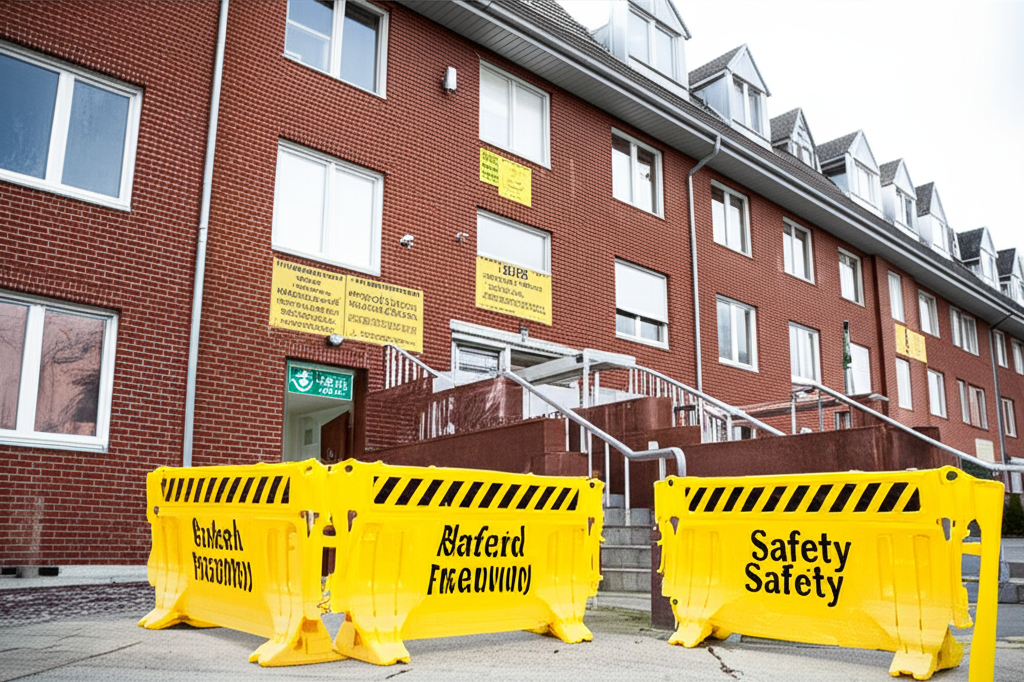Universities across the nation are facing mounting pressure to address campus safety concerns as liability issues continue to escalate. Recent incidents have prompted institutions to reassess their risk management strategies, leading to significant changes in safety protocols and insurance coverage.
Rising Costs
Campus liability insurance premiums have increased by an average of 35% over the past two years, reflecting growing risk exposure for higher education institutions.
Recent Safety Incidents
A string of campus safety incidents over the past academic year has highlighted vulnerabilities in university security systems and emergency response procedures, raising questions about institutional liability and duty of care.
Types of Incidents Driving Concerns:
- Violent crimes on or near campus grounds
- Sexual assault cases and Title IX violations
- Accidents involving campus facilities and equipment
- Mental health crises and suicide attempts
- Hazing incidents in student organizations
- Alcohol-related injuries and deaths
"The legal landscape has shifted dramatically. Universities can no longer assume they're protected from liability simply because they're educational institutions. We have to think like any other business when it comes to risk management."
— David Park, University Risk Management Director
Legal Liability Trends
Courts are increasingly holding universities accountable for campus safety, moving away from the traditional 'in loco parentis' doctrine that once limited institutional liability for student welfare.
Campus Liability Categories
| Liability Type | Frequency | Average Settlement | Prevention Cost |
|---|---|---|---|
| Personal Injury | High | $150,000 | $50,000/year |
| Sexual Assault | Medium | $500,000 | $200,000/year |
| Discrimination | Medium | $300,000 | $100,000/year |
| Property Damage | High | $75,000 | $25,000/year |
| Wrongful Death | Low | $2,000,000 | $500,000/year |
Overview of campus liability risks and associated costs
Insurance Market Response
The insurance industry has responded to increased campus liability by raising premiums, tightening coverage terms, and requiring more comprehensive risk management programs from university clients.
Market Changes
Some insurers are now requiring universities to implement specific safety technologies and training programs as conditions for coverage, fundamentally changing how institutions approach risk management.
New Safety Technologies
Universities are investing heavily in new safety technologies, from emergency notification systems to advanced surveillance equipment, as part of comprehensive risk reduction strategies.
Technology Investments:
- Campus-wide emergency alert systems
- Enhanced lighting and surveillance cameras
- Electronic access control systems
- Mobile safety apps for students
- Automated external defibrillators (AEDs)
- Mental health crisis intervention tools
Policy and Procedure Changes
Beyond technology, universities are implementing new policies and procedures designed to reduce liability exposure while maintaining the open campus environment that defines higher education.
"We're walking a fine line between creating a safe environment and maintaining the academic freedom and open access that are fundamental to university life. It's a constant balancing act."
— Dr. Lisa Thompson, Vice President for Student Affairs
Training and Education Programs
Staff training has become a critical component of campus risk management, with universities investing in comprehensive education programs for faculty, staff, and students.
Training Program Components
| Program Type | Target Audience | Frequency | Cost per Person |
|---|---|---|---|
| Emergency Response | All Staff | Annual | $150 |
| Title IX Compliance | Faculty/Staff | Bi-annual | $200 |
| Mental Health First Aid | RAs/Counselors | Annual | $300 |
| Security Awareness | All Community | Ongoing | $50 |
| Crisis Management | Leadership | Annual | $500 |
Overview of campus safety training programs and associated costs
Student Safety Expectations
Today's students and parents have higher expectations for campus safety than previous generations, creating additional pressure on universities to provide comprehensive security measures.
Positive Outcomes
Despite increased costs, many universities report that enhanced safety measures have improved campus climate and reduced actual incidents, suggesting the investments are worthwhile.
Financial Impact
The financial impact of enhanced safety measures is significant, with some universities reporting that safety-related expenses now account for 5-8% of their total operating budgets.
Budget Allocation Changes:
- Increased security personnel staffing
- Technology infrastructure upgrades
- Insurance premium increases
- Legal counsel and compliance costs
- Training and education programs
- Emergency preparedness equipment
